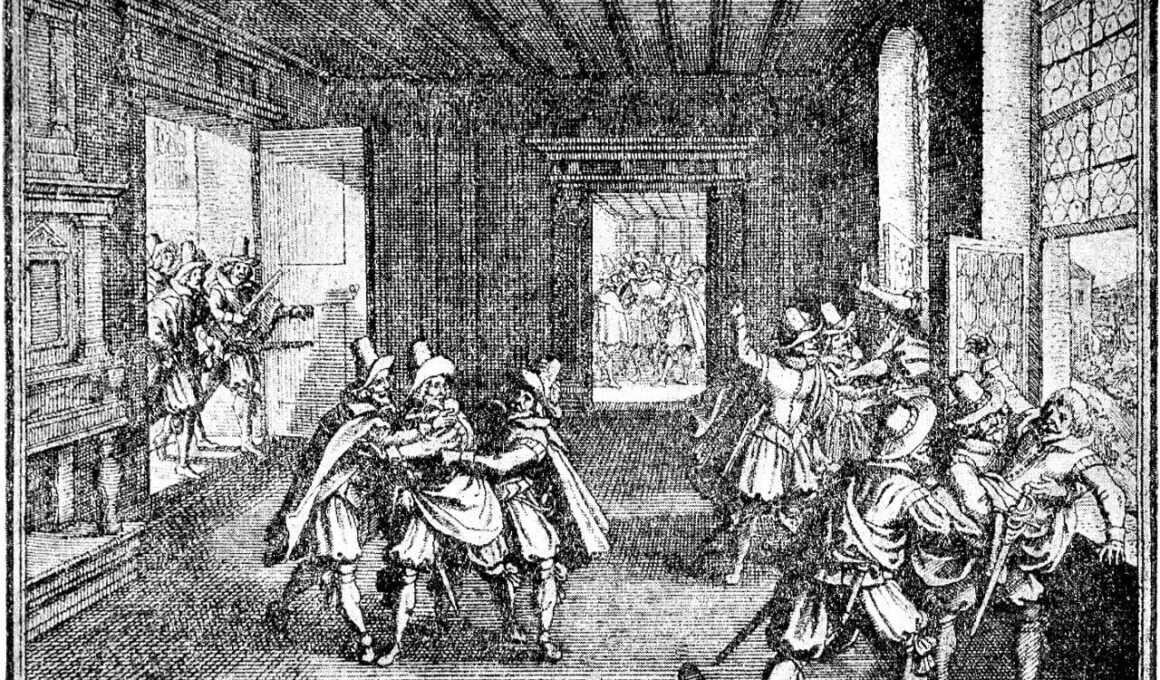Table of contents Show
On the 23rd of May, 1618, tensions flared up in Bohemia. Then, in what became known as the Defenestration of Prague, three Holy Catholic leaders were defenestrated by native Protestants. They either made it by the skin of their teeth or stumbled onto a heap of manure, but the officials made it out alive.
Maybe you’re wondering, “What is Defenestration?” Defenestration refers to the act of tossing anything or somebody through an open window. There’s a term for that; you’re right. One of the Latin words for the window is fenestra. Because of this, the terrifyingly specific term “defenestration” (meaning “to toss somebody out an open window”) was born.
The results, however, were disastrous. There was more at play than a disagreement between two faiths in the second Defenestration of Prague. It perfectly captured the escalating discontent among Catholics and Protestants across Europe.
Further, its deadly aftermath triggered the Thirty Years’ War, responsible for the deaths of almost eight million people due to fighting and famine.
So, what caused the defenestration of Prague in 1618?
What Was The Defenestration of Prague?
Catholic-Protestant tensions dominated the years before the Defenestration of Prague in 1618. As Protestantism swept across Europe and split the Roman Empire, these two sects fought throughout the majority of the sixteenth century.
The Peace Agreement of Augsburg of 1555 cemented an unstable truce between the two sects. He who rules the lands, dictates the religion policy (Cuius regio, eius religion) allows a king to choose his country’s religion.
Bohemia’s Catholic monarchs permitted Protestants to assemble freely. Rudolf II’s 1609 Declaration of Royalty allowed freedom of worship.
It gets complicated there. After Mattias took control, he preserved the Letter of Monarch and appointed Ferdinand II, his devout Catholic nephew, Ruler of Bohemia, and his successor.
Ferdinand wanted to make Catholicism Europe’s exclusive religion as a monarch. He rejected the Letter of Royalty and forbade Protestants from building worship places in Broumov and Hrob.
Protestants raged. On May 23, 1618, they met in Prague to hear the imperial counselors or burgraves, and the Defenestration of Prague followed.
The Impact of the Second Defenestration of Prague
On May 23, 1618, inside the Bohemian Chancellery, an irate mob of Protestants confronted four Catholic legislators. Count Jindich Thurn and the other Protestants were curious if the burgraves had told Ferdinand to disregard the Letter of Majesty.
Two of the burgraves were able to get away by claiming they were innocent, while the other two weren’t as fortunate. The growing mob of Protestants detained Counts Villem Slavata and Jaroslav Martinitz, as well as their secretary, by the name Philip Fabricius.
When the three Catholics tried to escape, the outraged Protestants grabbed them. Martinitz, Slavata, and Fabricius were being pushed toward a window by the Protestants while they cried to the Blessed Virgin Mary for her help.
Although no lives were lost, the Defenestration of Prague had a profound effect on the city. The Catholic officials rushed straight to Ferdinand to inform him of the situation. In response, Ferdinand swore vengeance.
The Aftermath
The defenestration of Prague ignited like a dry field. The tragedy widened Europe’s Catholic-Protestant divide. Bohemia rebelled, overthrowing Ferdinand II and proclaiming Frederick V the king.
Cross-alliances, religious fervor, and millennium-old conflicts wreaked havoc. The Thirty Years’ War affected cities and farmlands and killed almost 8 million people.
In 1648, the Westphalia Peace brought an end to the conflict, but war for decades changed Europe. Spain fell. France ascended. Bohemia suffered too.
Bohemia lost its kingdom title and religious freedom, which Protestants fought for in the Defenestration of Prague.
Catholicism replaced Protestantism. There was a suppression of the Czech language of Czech for German.
The Bohemian window-tossing action had further effects. Prague’s “second” defenestration occurred in 1618 since the first one in 1419. March 1948 might have witnessed another.
Tour Prague and see The Impact of Defenestration
Defenestration in Prague has repercussions across Europe, as you will see if you make the trip there. And if you’re worried about how much you’ll need to get by in Prague, don’t be.
This defining event that irrevocably altered the course of European history represented European anxiety over new religions and foreshadowed the violence that would follow when outraged Protestants clashed with Catholic authority.
For a deeper understanding of the present, discover the language dynamics in Prague.





